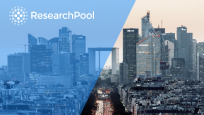
SAB - Highlight from substantial cash dividend
Q2-FY25: Benefits from lower raw material costs begin to materialize, special consumption tax (SCT) impact in focus• SAB’s Q2-2025 performance was subdued, with net revenue of VND 6,804 bn (-15.9% YoY) and NPAT-MI of VND 1,208 bn (-3.3% YoY), driven by market share loss to competitors like Heineken in the sell-in channel and the accounting treatment of SCT costs. SAB proactively reduced orders to distributors to manage inventory, preparing for a selling price increase in H2-2025.
• A key factor behind the sharp double-digit revenue decline: Sabibeco (SBB), now a 65%-owned subsidiary of SAB in 2025, has its SCT deducted from SAB’s consolidated net revenue rather than cost of goods sold, significantly impacting reported revenue.
• A bright spot amid Q2’s lackluster results was input cost savings, as SAB utilized lower-cost raw materials in 2025 after depleting high-cost inventory from 2024.
FY25 Outlook: A Challenging Year for the Beer Industry with Cost Optimization as the Sole Anchor
• In 2025, SAB faces revenue growth challenges due to Decree 168, weak post-Covid FMCG/beer consumption sentiment, and unfavorable seasonal factors during Tet. The key support for performance lies in optimizing input costs, with malt prices normalizing and aluminum prices locked in early in the year.
• For Q3-2025, we estimate net sales at VND 6,243 bn (-8.9% YoY) and NPAT-MI at VND 1,096 bn (-2.0% YoY), driven by factors similar to Q2-2025.
• For full-year 2025, we project SAB’s net sales at VND 25,802 bn (-19.0% YoY), with NPAT-MI/EPS at VND 4,120 bn (-4.9% YoY) and VND 3,212, respectively.
Outlook & Recommendation
Vietnam’s high per capita beer consumption, coupled with regulatory measures like Decree 100/2019, Decree 168, and the proposed SCT on alcoholic beverages, signals ongoing challenges for the beer industry in the medium to long term. SAB aims to drive growth by expanding market share, focusing on the off-trade channel, though this faces stiff competition from Heineken and Carlsberg, with limited differentiation in product structure or distribution networks.
The most effective strategy for SAB lies in optimizing input costs (locking in cheaper raw materials) and reducing advertising and discount expenses, aiming to restore net margin to the industry average of 14.0-16.0%. A key highlight is SAB’s substantial cash dividend of VND 5,000/share for at least 2025-2026, paid annually in June and December.
We value SAB using a 50:50 blend of short-term EV/EBITDA and long-term DCF methodologies, setting a one-year target price of VND 53,000/share (including a VND5,000/share cash dividend), corresponding to a forward 2025 P/E of 15.0x. Based on the closing price on August 28th, 2025, we recommend ACCUMULATE for SAB.
Viet Dragon Securities belongs to top 20 biggest securities companies in terms of chartered capital in Vietnam. With a qualified, dedicated and professional team, a widespread network, advanced technology, diversified products and services, and good relationship with local and foreign institutions, we provide a wide range of services and products to our clients both individuals and institutions, both local and foreign. We commit to provide our clients with promising investment opportunities and a comprehensive and professional financial investment services.
RongViet Research reports are diversified and abundant, along with in-depth analysis and performed by experienced, highly-qualified and knowledgeable teams. With the objectives of transparency, accurate and timely manner, RongViet believes that our products would always be important sources of information for customers/investors’ investment decisions.”

Unfortunately, this report is not available for the investor type or country you selected.
Browse all ResearchPool reportsReport is subscription only.
Thank you, your report is ready.
Thank you, your report is ready.
